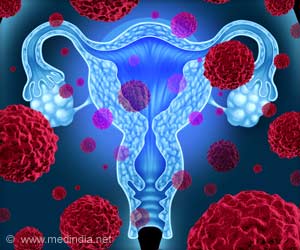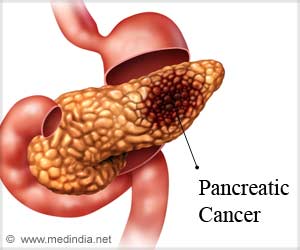Scientists have used data obtained from genes involved in inherited forms of breast cancer to identify a novel gene potentially linked to the disease.
Scientists at the Dana-Farber Cancer Institute and an international group of collaborators have used data obtained from genes involved in inherited forms of breast cancer to identify a novel gene potentially linked to the disease.
Their approach, described in a study posted online by the journal Nature Genetics, used advanced laboratory techniques plus novel "data mining" approaches to discover new cancer-related genes. The technique may help researchers find genes associated with other forms of cancer as well, plus non-cancerous conditions that have a genetic basis, the authors state."More than 85 percent of breast cancer cases don't have a clear hereditary link. That is, they arise in women who haven't inherited an abnormal gene that increases their risk for the disease," says study co-author David E. Hill, PhD, of Dana-Farber's Center for Cancer Systems Biology (CCSB), where the research was based. "Science knows very little about which genes are involved in such cancers. Even among the 15 percent of breast cancers that do have a hereditary component, the responsible genes are known in only about three-quarters of cases.
"In this study," he continues, "We asked whether we could use the developing tools of network modeling [which probes the connections between genes and between proteins] and expression profiling [which focuses on patterns of gene activity] to guide us in finding candidate breast cancer genes."
Beginning with a list of four genes known to cause breast cancer when inherited in an abnormal form - BRCA1, BRCA2, ATM, and CHEK2 - the investigators gathered information from existing studies on connections between those "hub" genes and their gene partners. Those studies were of five kinds: expression profiles of genes whose activity mirrors that of the four hubs; surveys of gene activity when BRCA1 is shut down; published studies of biochemical interactions among proteins specified by the hub genes; expression profiles using yeast and worm versions of the hub genes; and the Dana-Farber team's own work in mapping protein-protein interactions.
"Although inherited and non-inherited (or 'somatic') breast cancers develop by markedly different mechanisms, it's likely that some of the same genes are involved," says study co-author Michael Cusick, PhD, of Dana-Farber. "We hope that by beginning with genes known to cause hereditary cases, we can derive clues to additional genes associated with hereditary disease as well as sporadic, non-inherited cases.
"The evidence we collected provides a 'global perspective' on the functions of breast cancer genes," he continues. "This technique enabled us to integrate existing data to find connections or patterns that others might have missed."
Advertisement
Confirmation of the validity of the list came serendipitously, when researchers in the lab of Dana-Farber's David Livingston, MD, identified two genes as potentially related to breast cancer. Both were high on the team's list.
Advertisement
More evidence came as a result of collaboration with scientists in New York and Michigan. Geneticists Stephen Gruber, MD, PhD, MPH, and Kenneth Offit, MD, at the University of Michigan and New York University, respectively, examined breast tumor samples from patients in Israel and New York and found that those with an error in HMMR were three to four times more likely to develop breast cancer than those without it. Interestingly the error didn't cause a faulty version of the HMMR protein to be made; rather it resulted in an over- or undersupply of the protein in breast cells.
"HMMR is a well-known gene; its job is to contribute to the function of the centrosome," a structure within cells that forms a "spindle" for chromosomes to align themselves during cell division, Cusick observes. Scientists have long known that cells with mutated BRCA1 often have abnormal spindles, but why this is so has been unclear. The fact that HMMR interacts strongly with BRCA1 on a functional level and is involved in spindle formation suggests a connection. Cells whose centrosomes assemble improperly often develop aneuploidy, a condition in which there is an extra or missing chromosome. That, in turn, can yield the kind of DNA mixups that result in cancer.
Study co-author Jeffrey Parvin, MD, PhD, of Brigham and and Women's Hospital provided additional evidence of a tie between HMMR and BRCA1. He showed that cells without either gene are apt to have problems with centrosome formation.
Hill and Cusick note that the newfound connection between HMMR abnormalities and breast cancer does not mean it is an inherited breast gene. It is likely to be, instead, a breast cancer susceptibility gene in which an abnormality may result - depending on conditions that aren't yet known - in an increased breast cancer risk.
The investigators also say that the technique used in this study can be applied to any form of cancer or other genetically based disease in which genes for some forms of the disease are known while others are not. "It enables us to search for new cancer genes in an unbiased way, with no preconceptions of which ones may turn out to be involved in the disease," Hill says. "By combining the results of multiple studies on gene networks, we can let the data lead us to the answers. It provides a new avenue of research with a high likelihood of success."
Source-Eurekalert
GAN/S











